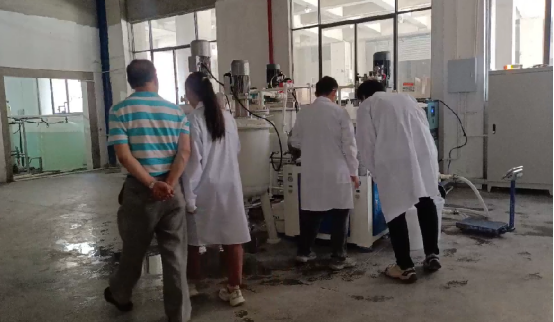Today marks the second "fu" in the Chinese lunar calendar, signaling a period of high temperatures across the country.
As the heatwave persists, it is imperative for all industrial and manufacturing units to prioritize the prevention of
heat-related illnesses and ensure optimal working conditions for their employees.
Amidst the scorching weather, it is crucial not only to safeguard the well-being of our staff but also to
maintain the functionality of our work equipment, such as polishing machines, grinders, and related devices,
in the face of escalating temperatures. In response to these conditions, the deployment of refrigeration units
becomes essential to prevent overheating and uphold operational efficiency.
Furthermore, particular attention must be paid to the storage and handling of our polishing solutions in these elevated temperature environments.
Failure to regulate the temperature of the storage space can lead to chemical reactions and the degradation of the polishing slurry.
As a standard practice, the ideal storage temperature for the polishing slurry should be maintained within the range of 5 to 35°C to ensure its integrity and effectiveness.
The use of polishing slurry in conjunction with polishing machines introduces additional challenges,
as the operational temperatures of the slurry tend to rise significantly due to rotational and frictional forces during use.
In scenarios where cyclical polishing is employed, the prolonged working time causes the solution's temperature to soar,
often reaching approximately 40°C. It is imperative to closely monitor and regulate this temperature,
including the timely addition of fresh slurry and the use of refrigeration units to prevent adverse reactions that could compromise the quality of the polishing effect.
The impact of high temperatures is further exacerbated by the increased evaporation of the polishing slurry during use,
particularly in hot weather. Therefore, in such conditions,
it becomes even more critical to replenish the slurry promptly to maintain the desired level of effectiveness.
In conclusion, as we navigate through the challenges posed by the prevailing high-temperature conditions,
it is paramount to prioritize the well-being of our workforce and the integrity of our equipment.
By implementing stringent measures to manage heat-related risks and sustain optimal working conditions,
we can ensure the safety of our employees and the efficiency of our industrial processes.
